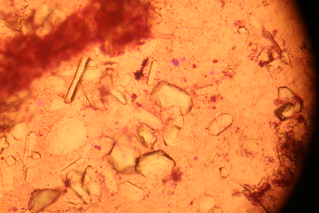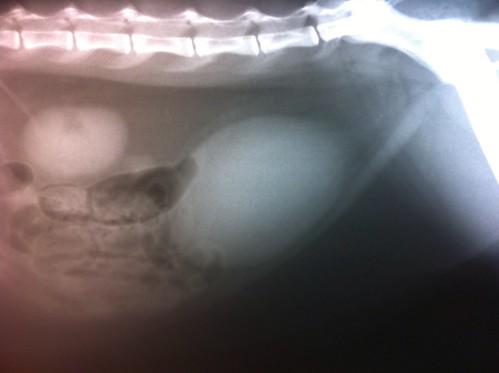We’ve had a few things to say about urinary health on the pages of this blog, and today we’re going to talk about the life-threatening emergency situation that is a male cat with urinary obstruction.
|
This is more of a problem for male cats than females because of the nature of the anatomy. Female cats have a shorter urethra (the opening through which a cat urinates) with a larger diameter. Male cats have a longer urethra with a very narrow diameter. Should a male cat form crystals or plugs of cells in the urine, they can physically obstruct the urethra or they can irritate the urethra to such a degree that the urethra’s muscles clamp down tightly, preventing the cat from appropriately urinating.
When this happens, a chain of events are set in motion that can lead to the death of the cat. First, the kidneys do not stop producing urine under these circumstances and they continue sending the urine to the bladder through a very narrow tube called a ureter. Should the bladder become so full that the urine can’t flow down the ureter, back pressure builds at the level of the kidney, preventing the kidneys from effectively filtering the blood. This causes acute kidney failure, where toxins to build up in the blood, and the patient becomes sick, loses the appetite & vomits.
Further, getting back to the bladder, the muscle tone that helps the bladder to express itself during a normal urination is lost because of the persistent stretching when the bladder becomes too full.
If the obstruction isn’t relieved at this point, death can come in another 24 to 72 hours.
If your cat goes more than 18 to 24 hours without urinating, or is spending more time in the litter box than normal and producing small amounts to no urine, you need to seek veterinary help.



